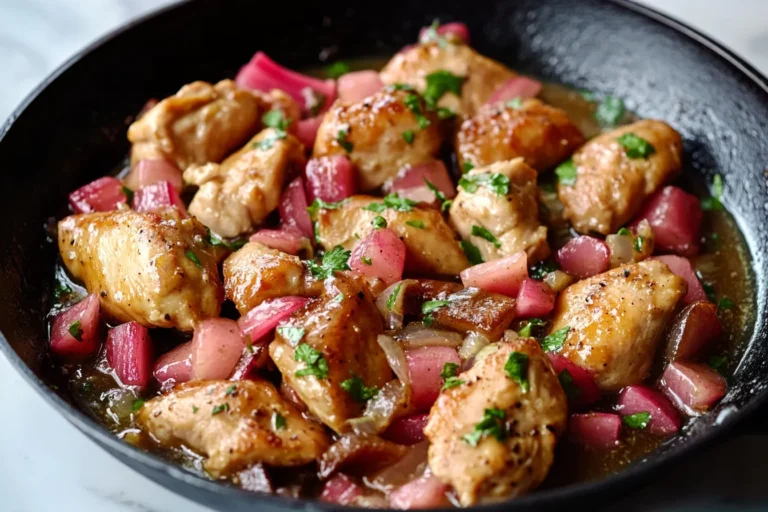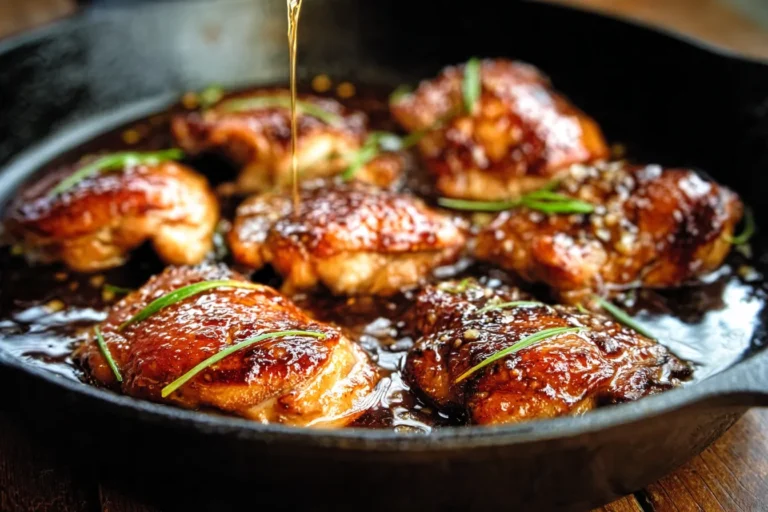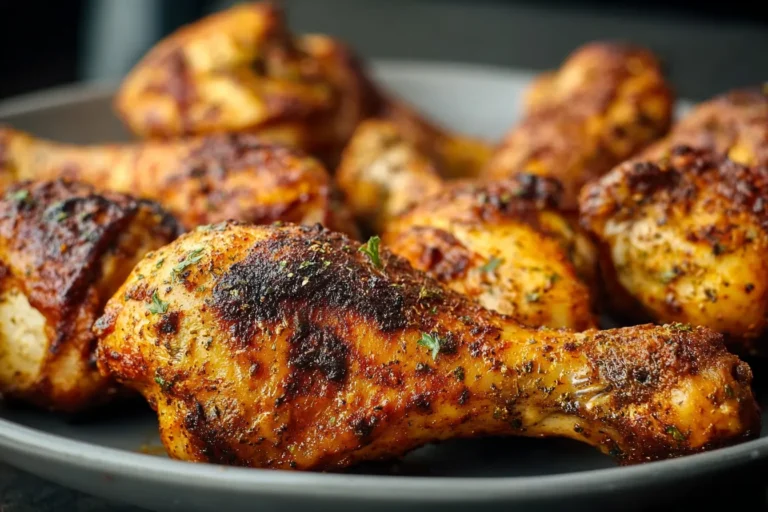Chicken of the Woods Recipe: How to Cook This Wild Mushroom
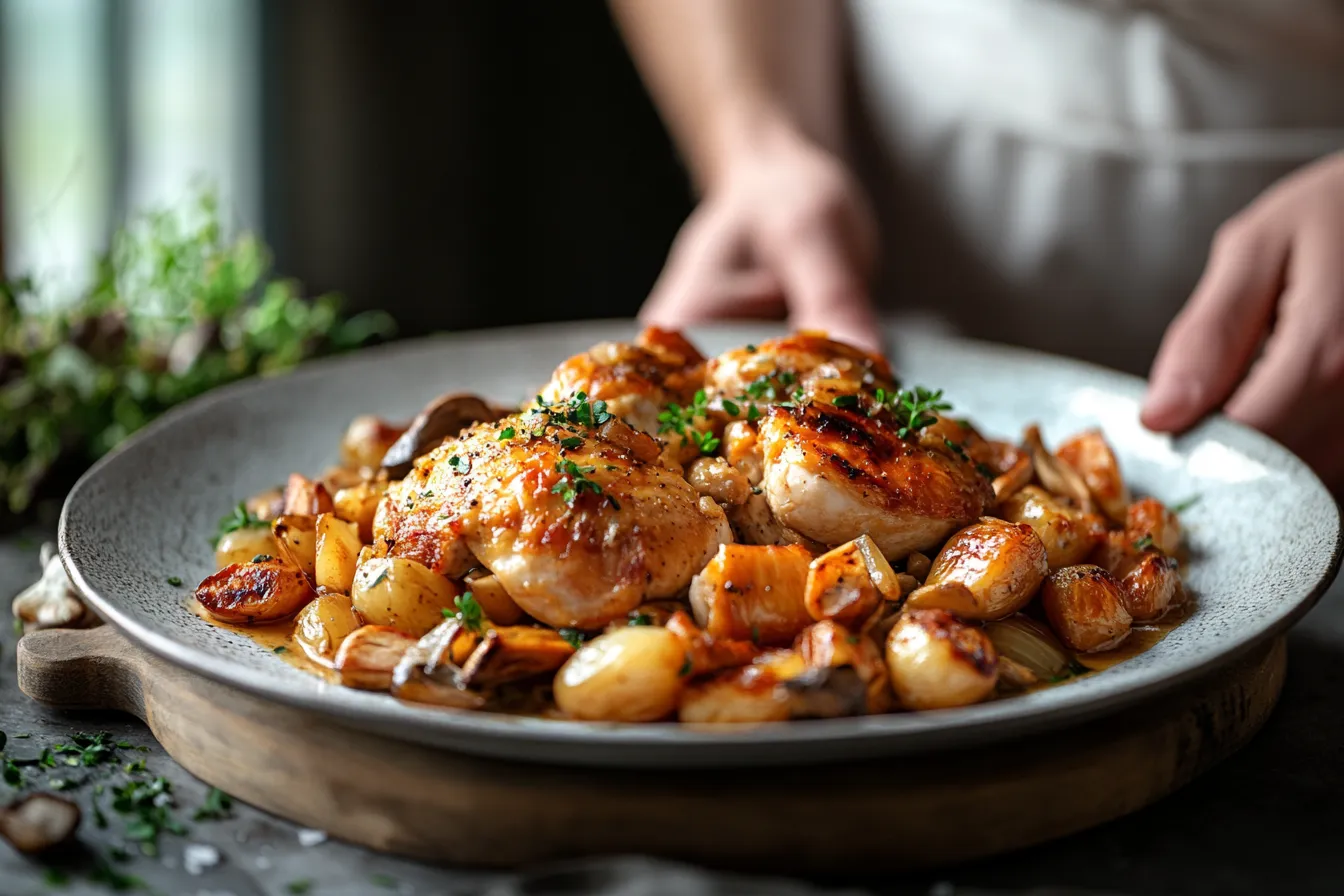
Table of Contents
Chicken of the Woods recipe opens up new culinary adventures for home cooks. Exploring edible fungi, like Chicken of the Woods, turns foraging into a fun cooking journey. This wild mushroom has a vibrant orange and yellow color, along with a unique taste that makes it a must-try for anyone looking to explore new flavors in the kitchen.
Starting your chicken of the woods recipe journey is exciting. Foragers love these mushrooms for their meaty texture and strong taste. They taste like chicken, making them a hit with vegetarians and wild food lovers. With the right steps, you can discover many tasty dishes.
Key Takeaways
- Chicken of the woods is a distinctive wild mushroom with chicken-like texture
- Proper identification is crucial for safe wild mushroom cooking
- These edible fungi offer unique nutritional benefits
- Sustainable foraging practices protect natural ecosystems
- Wild mushroom recipes can transform home cooking experiences
What Is Chicken of the Woods and How to Identify It
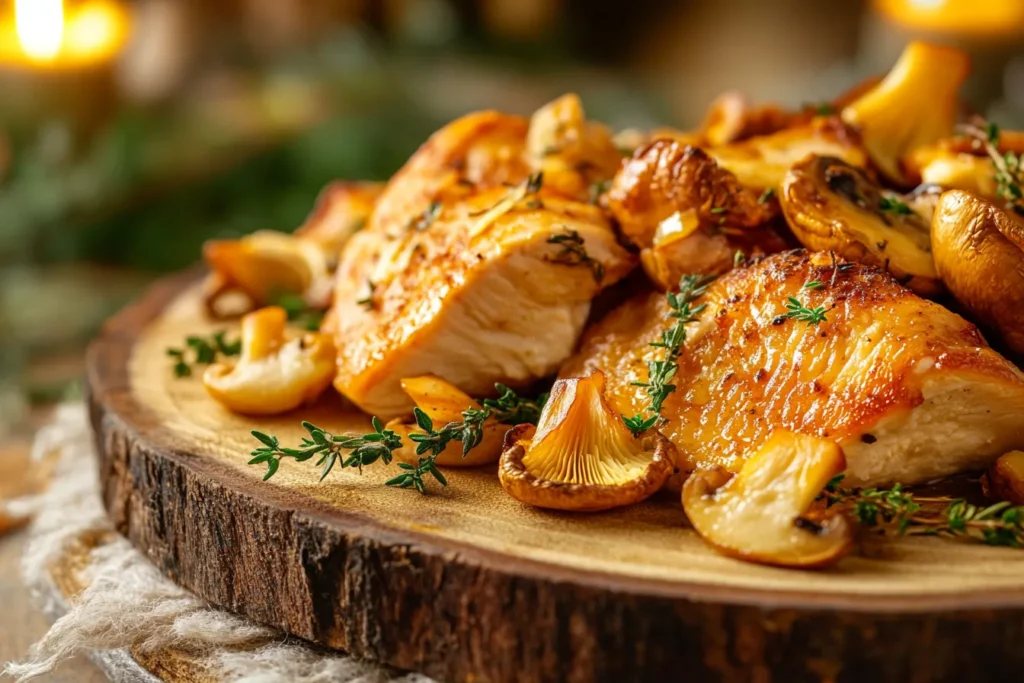
Foraging for wild mushrooms is exciting and rewarding. Searching for chicken of the woods is a favorite among mushroom lovers. It’s known for its unique look and taste. Knowing how to identify chicken of the woods is key for safe and successful hunting.
Key Identification Features
Chicken of the woods is easy to spot with its bright colors and soft texture. Here are the main traits to look for:
- Bright orange to yellow coloration
- Shelf-like or bracket-like growth pattern
- Soft, fleshy texture resembling chicken meat
- Grows on trees, typically oak or hardwood species
When identifying chicken of the woods, notice the color and texture. The edges are often more vibrant, from yellow to deep orange. Wild mushroom safety starts with accurate identification. So, take your time and compare your findings carefully.
Best Harvesting Seasons
Timing is key in mushroom foraging. Chicken of the woods usually shows up:
- Late spring through early fall
- Peak season varies by geographic region
- Typically found after consistent rainfall
Safety Considerations for Foraging
Mushroom hunting needs careful attention and knowledge. Important safety tips include:
- Always consult an expert or experienced forager
- Use multiple identification methods
- Never consume a mushroom you cannot definitively identify
- Be aware of potential allergic reactions
“When in doubt, throw it out” is the golden rule of mushroom foraging.
Your journey into identifying chicken of the woods can be thrilling and delicious. Approach it with caution and curiosity. Remember, mushroom foraging tips are crucial for a safe and enjoyable wild experience.
Chicken of the Woods Recipe: Simple Steps for a Delicious Meal
Cooking chicken of the woods mushrooms is a fun journey. It starts with picking the freshest ones. These vibrant orange mushrooms are a tasty change from usual proteins.
First, clean your mushrooms well by brushing off dirt. Then, cut them into equal pieces for even cooking.
- Remove any tough or woody sections
- Slice into 1/4 inch thick pieces
- Pat dry with clean paper towels
Here’s a simple way to cook them:
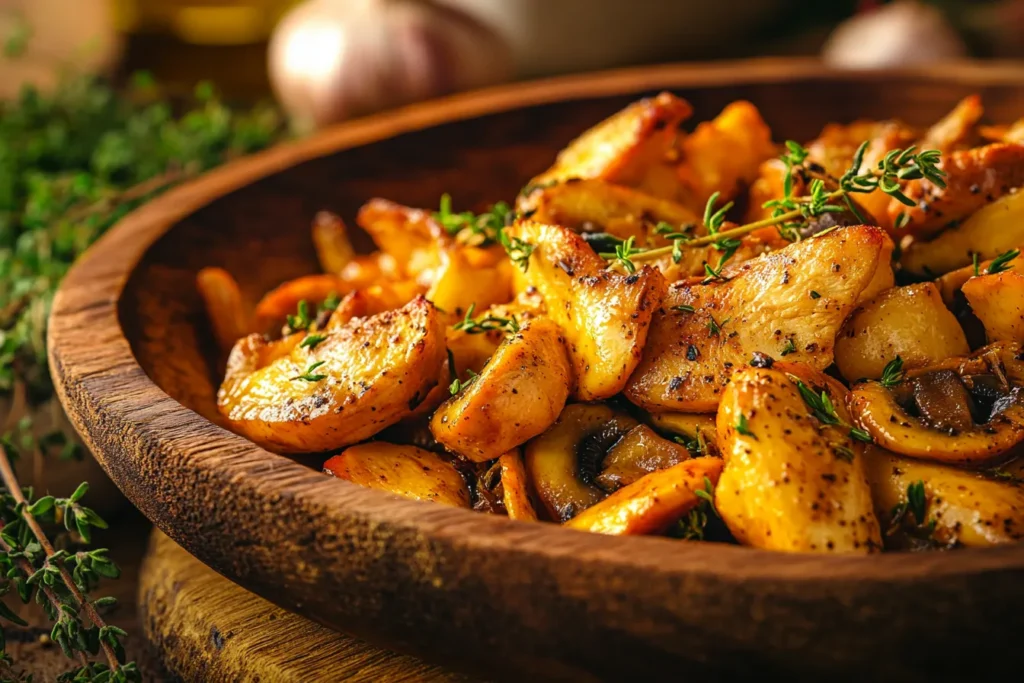
- Heat olive oil in a cast-iron skillet
- Add minced garlic and herbs
- Sauté mushroom pieces for 4-5 minutes
- Season with salt and black pepper
| Ingredient | Quantity | Purpose |
| Chicken of the Woods | 2 cups | Main protein |
| Olive Oil | 2 tablespoons | Cooking medium |
| Garlic | 2 cloves | Flavor enhancement |
| Fresh Thyme | 1 teaspoon | Aromatic herb |
Pro tip: Store leftover cooked chicken of the woods in an airtight container for up to three days in the refrigerator. Reheat gently to maintain texture and prevent drying out.
Conclusion
Exploring wild food cuisine is exciting for those who love cooking and nature. Chicken of the woods mushrooms are a great start to foraging. They offer a tasty and healthy food option that connects you to nature.
Eating chicken of the woods has many benefits. They have a meat-like texture, making them great for vegetarians and vegans. Their rich flavor lets you try new cooking methods and use less traditional protein.
Foraging for wild mushrooms is just the beginning. Each trip teaches you about local areas, biodiversity, and how to harvest responsibly. Always check with local experts, follow guidelines, and respect nature. This way, you build a strong bond with the land and its food.
Start your adventure with chicken of the woods and other wild mushrooms. You’ll learn a lot about cooking and grow to love nature even more. Begin with small steps, stay curious, and enjoy finding new foods in your area.
FAQ
What is chicken of the woods mushroom?
Chicken of the woods is a bright orange or yellow mushroom. It tastes like chicken and has a meaty texture. It grows on trees in shelf-like clusters, making it a favorite among foragers and chefs.
How do I safely identify chicken of the woods mushrooms?
Look for bright orange or yellow color, a shelf-like shape, and a smooth texture. Always check with an expert or a field guide before eating. Key signs include growing on trees, no gills, and a vibrant look.
When is the best season to forage for chicken of the woods?
Forage from late spring to early fall (May to October). The exact time varies by location and weather. Warm, humid weather is best for mushroom growth.
Are there any potential allergic reactions to chicken of the woods?
Some might have allergic reactions or stomach issues. Try a small amount first and wait 24-48 hours. Be careful if you’re allergic or have a sensitive stomach.
What are the best cooking methods for chicken of the woods?
You can sauté, grill, bake, or roast chicken of the woods. It absorbs flavors well and is great as a meat substitute. Make sure to cook it well for the best taste and safety.
How should I clean and prepare chicken of the woods before cooking?
Gently brush off dirt with a soft brush. Don’t wash it with water. Cut off tough parts and slice as needed. Check for insects or decay before cooking.
Can I freeze chicken of the woods mushrooms?
Yes, you can freeze them. Slice first, blanch, cool, and freeze in containers or bags. They last 3-6 months. Use them in cooked dishes, not raw.
What nutritional benefits do chicken of the woods offer?
They are low in calories but high in protein, fiber, and minerals. Rich in antioxidants, potassium, and vitamin C. They may also have anti-inflammatory effects, making them a healthy diet addition.
Are there any look-alike mushrooms I should be aware of?
Some mushrooms look like chicken of the woods but are not safe to eat. Always check with an expert to be sure. Never eat a mushroom unless you’re 100% sure it’s safe.
Can chicken of the woods be eaten raw?
No, never eat chicken of the woods raw. Cook it well to kill bacteria and improve taste. Cooking also makes it more enjoyable to eat.

